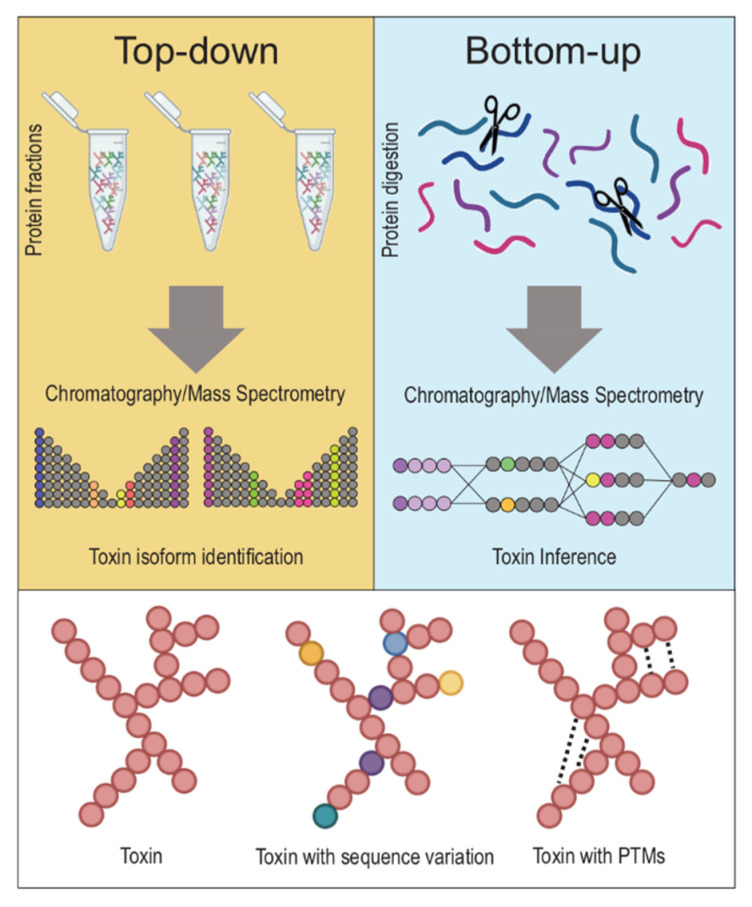Figure 2.
Top-down vs. Bottom-up proteomics approaches. The two main approaches in discerning toxins from one another in venoms are top-down and bottom-up proteomics. Top-down proteomics describes an approach whereby a venom’s whole proteins (notice: native, folded proteins in tubes on top left) are holistically analyzed without the need for breaking proteins down into their constituent fragments. On the other hand, bottom-up proteomics refers to techniques that involve the denaturing of whole proteins (notice: unfolded proteins on top right) into fractions, and the study of these protein fractions separately, before reassembling these fragments into proteins in silico to identify a venom’s constituent toxin proteins. Typically, top-down proteomics is more accurate in discerning between closely related toxins with minimal sequence variation or toxins with post-translational modifications.

